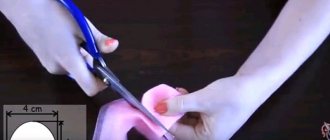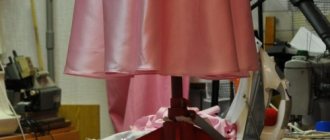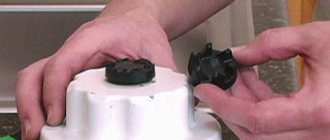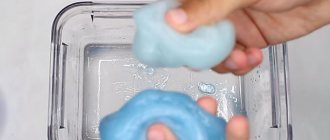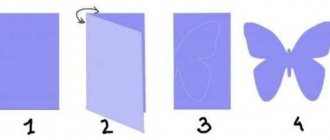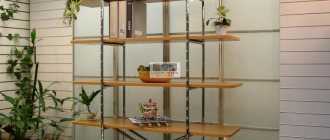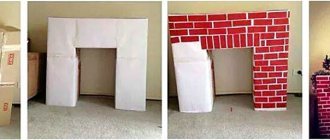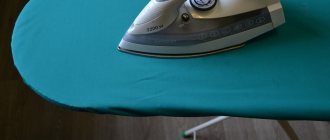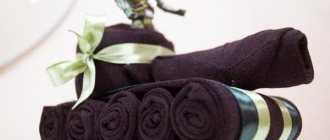A DIY blanket made from old jeans is a way not only to give new life to unnecessary things, but also to decorate any room with a stylish and original product. Many needlewomen prefer to use old things to make various products, and denim fabric can be used to make a blanket that will last for many years. Today we will look at the types of techniques and ways to create such unusual things.
DIY blanket made from old jeans
What do novice needlewomen need to know?
Making a blanket from old jeans with your own hands is quite simple, because the way of joining fabric fragments is reminiscent of a regular mosaic. In order to obtain such a product, it is important to maintain consistency during work.
First you need to select materials and prepare all the necessary equipment. This must be done so that everything is at hand during the work process. Next, you have to choose the most suitable scheme - here it is important to take into account your personal preferences and the characteristics of the material.
Approximate scheme for making a blanket
Craftsmen use a variety of patterns to create quilts, and you can choose one of them or design your own. Beginners are recommended to choose the most primitive and fastest option. At the same time, the finished blanket will look no worse than more complex products. So, you can gain experience, after which any scheme will not seem too difficult.
Homemade patchwork quilt
It is important to remember that any old product from which you plan to make a blanket should be brought into a neat appearance (washed and ironed). In this case, washing should be as gentle as possible at low temperatures so as not to damage the structure of the material. For extra softness, you can dip your jeans in rinse aid.
Rules for caring for denim
Decor features
By making a patchwork blanket from jeans with her own hands, a needlewoman can show her imagination and decorative talent. Thus, the seams on the product will look advantageous when decorated:
- lace ribbons;
- beads;
- beads;
- in chains;
- beautiful buttons;
- bugles and so on.
An embroidered relief or flat seam can be an excellent decorative element. The entire perimeter of the product can also be decorated with fringe and all kinds of patterns can be created on it.
Which jeans are best to use?
Even though blankets are made from old jeans, they should only be made from durable fabric. Therefore, you should choose them taking into account the following nuances:
- It is better not to use any worn fragments of jeans for work. If they are present, it is better to carefully cut them out with scissors. Any parts with holes are also not suitable for making a blanket; it is better to get rid of them immediately.
- The material should be of a single color, in which case the product will turn out to be especially attractive and even strangers will not suspect that it is made from scraps. You can combine denim material of different colors in one product, but it must have the same structure.
Old jeans should look neat
In some cases, craftswomen skillfully combine fabrics of different textures in one product. So, during the sewing process they add fragments of burlap, velvet and other materials.
Universal Soldier
If the wardrobe is imagined as an army headquarters in the service of a beautiful lady, then jeans will play the role of a faithful squire, who is with his general both at feast and at peace. And if we return to reality, the fabric from which comfortable and beautiful trousers are made is so practical that, even if slightly frayed, it does not lose its strength and attractiveness. So you wouldn’t dare send such a thing to a landfill. And there’s no need, because you can sew from old jeans:
- skirts;
- T-shirts;
- aprons;
- vests;
- bedspreads;
- blankets;
- bags;
- table napkins;
- chair covers;
- handbags (women's or for a laptop, tablet, phone), etc.
And if you decide to sew a blanket from old jeans with your own hands, don’t even think about throwing away the small scraps: you can use them to decorate crafts, trim clothes, and use them to decorate curtains. And to create an unusual bedspread, in addition to the trousers themselves, you will need:
- sharp scissors;
- threads, thick needle;
- sewing machine;
- lining material.
And... patience! Nothing will work without him.
Schemes for making a bedspread
The most beautiful products are obtained when needlewomen work using the same technique. There are different options for patterns: some people prefer to use large pieces of fabric, while others prefer small ones.
So, you can create all kinds of patterns. Some professional craftswomen prefer the technique of creating patchwork quilts from pieces of fabric of different lengths and widths. We will look at the most well-known techniques that have been successfully used for many years.
Blankets in various techniques
Table No. 1. Common techniques for making patchwork quilts.
| Option | Description of work |
Quick square | This is the most primitive technique for making a product, which is best suited for novice craftsmen, thanks to which even creating a massive blanket will only take a few hours. Making a quick square is not at all difficult. You need to take denim (jean fabric) of two different shades, then cut out two identical rectangles and sew them together. Then you need to go over the seam with an iron. Then you can cut the same rectangle from a material of a different shade (its length should correspond to the length of the previous workpiece). Next, all these fragments are stitched together. These squares can be used to create any size blanket. |
Watercolor | In this case, the color of the material is of great importance. After all, fabric fragments are connected to each other in a certain color sequence. By working with this technique, you can even create a color transition (ombre effect). In this case, first only the dark flaps are sewn together, gradually adding lighter ones. Keep in mind that not every beginner can cope with this process, because you have to spend a lot of time just choosing a shade for the transition. |
Stripes | Another easy technique is to create a blanket from stripes. They can be completely different sizes. First, you will have to cut the denim fabric according to the parameters - it is from these strips that it is easiest to create your own, unique pattern. You can attach them to each other in any order, the main thing is that the product has an aesthetic appearance, so it is better to display the diagram of your actions on a sheet of paper in advance. |
Crazy patchwork | This is the name for a professional technique for creating a patchwork quilt, which beginners cannot always handle. Here you can already use any shades of material and shapes of patches. So, the craftswoman will have to sew all sides of such parts. It is worth noting that this method is more suitable for those who have only small pieces of jeans and do not have a whole product. It will not be possible to make figures of the same shape from the pieces, and in order not to throw away these fragments, the best solution would be to create a product in this unusual style. |
Making a denim blanket from pieces of fabric is not at all difficult
Uncover
You can sew a blanket from denim scraps using a variety of cutting patterns. The result will be a product of different parameters, design and shape. To quickly progress the work, you will need to prepare preparations in advance. Their number and type directly depend on the style of the bedspread.
You can cut in squares, hexagons, stripes
Bedspread cutting samples can be of the following options:
- square and fringed using patchwork technique, from 350 elements with parameters 15x15 cm;
- from 252 square fragments with parameters 12x12 cm;
- from square elements 12x12 cm and 120 strips 2.5x12, 2.5x14.5, 2x14.5, 2x16.5 cm.
- from areas with motifs, using 20x20 cm squares of 2 color shades.
You can come up with a model yourself or use ready-made ideas. This type of needlework refers to a creative handmade technique. Canvases with a mosaic layout of denim patches with fluffy fringe look impressive.
Blanket made of stripes with a 3D pattern
There is another way to make a blanket from pieces of fabric, which produces an equally attractive and comfortable product. It is worth noting that for some beginners this method may seem more complicated.
The finished blanket will have such an unusual pattern
Step-by-step instruction
Step 1. It is necessary to prepare the material that will be used as a substrate. An unnecessary cotton sheet is best suited for this (the main thing is that it is intact). The cut dimensions must match the blanket. A few centimeters should be left to allow for seam allowance.
Preparing the material for the base of the blanket
Step 2. Next we need to take the denim and cut it into strips about 45-50 millimeters wide. If desired, you can make such blanks narrower or wider - it depends on what kind of blanket you plan to get in the final result.
Cutting denim strips
Step 3. Next we have to make a hem of about 1 centimeter on each side of such a strip. After that, you need to go over the hems with an iron to fix them in this position. In this case, we used three shades of fabric (we sew from darker to lighter).
We form hems on both sides of each strip
Step 4. We attach the strips of the main color to the backing using special sewing needles. The image shows seven such fragments, but if desired, you can make more of them (then the blanket will be, accordingly, wider).
We fix the strips on the substrate - it is important to check that they are positioned evenly
Step 5. Next, take a strip of a different color and pass it under the first strip at an angle (as shown in the photo).
We use a strip of the second color
Step 6. We continue to lay the same strip under the main ones. You must follow the same pattern as in the image.
We lay the strip further
Step 7. We pass another strip under the first two at the same angle (as in the image).
Passes a strip of a different color under two base strips
Do the same with the entire blanket.
As a result of the work done, this should be the basis for the formation of the subsequent drawing
Step 8. Then you should take a strip of a different color and pass it, starting from the right edge. The result should be a kind of rhombus - this allows you to connect the squares from the previous material with each other.
Pass a line of a different color at an angle
The result should be a blanket like this (after the first strip)
Step 9. The same steps must be done with another strip of this material.
Gradually, an unusual three-dimensional pattern is formed on the surface.
Step 10. After all the strips are connected, you need to fold the base and stitch it. In this way we made an unusual blanket from old jeans.
Fold the base and stitch it
Video - The idea of creating a denim rug
Required Tools
A blanket made from denim scraps is an excellent solution for the home, which you can make yourself. To create one canvas you will need several pairs of denim trousers or other denim clothing. Due to the fact that the products are worn, they must be washed and dried.
When making a large blanket, you will need a lot of denim, which should be the same in composition and density. When using cotton inserts, it is recommended to cut the required number of fabric strips before sewing, leaving allowances for stitching.
It is also permissible to control the cutting by laying out the parts according to the drawing and viewing the general image of the canvas. A preview is required to establish how many flaps are missing.
To work, you need to prepare the following tools:
| What you need | Nuances |
| Old denim clothes | Frayed and yellowed fabric is not suitable for sewing, so it must be cut off. The material can be different in texture and shade, which will make the canvas more original. Since denim fabric is characterized by high strength, a blanket can be taken on a hike in the mountains, to the country house, or used to decorate the home interior. |
| Lining fabric | The reverse side of the blanket should be warm, durable and soft. For this, it is advisable to choose natural lining fabric, because it will come into contact with the skin. Wool is suitable for these purposes, but it is quite expensive. It can be replaced with special cotton wool or ordinary, but high-quality padding polyester. |
| Sewing machine | Since denim fabric is quite strong, you definitely need to purchase special feet that allow you to beautifully make a curly line. If you have no experience working with a sewing machine, it is advisable to initially practice on any unnecessary materials. |
| Threads with a needle | To work with denim, the needles must be strong enough, so when selecting a tool, it is advisable to consult with the seller. The shade of the threads must match the color of the material. To create an original product, you can use threads that will differ in shade. |
The auxiliary tools are:
- auxiliary materials and accessories for decoration;
- ruler with centimeter;
- manicure and tailor's scissors;
- stencil;
- laundry soap, a thin piece of chalk, a pen or pencil.
Round patchwork technique
In the process of work, it is not necessary to use only squares or rectangles - some craftsmen prefer to make blankets from round pieces of fabric.
In this case, you will need to prepare the following:
- disk;
- a simple pencil;
- scissors;
- old jeans;
- sewing supplies.
Step-by-step instruction
Step 1. You need to carefully iron the old jeans, then draw circles on them on the back side, using a disk (stencil) for this. After which they should be cut out.
Round blanks
Step 2. From the wrong side of our parts we draw an even square.
Draw a square on the other side
Step 3. Next you will need to fold the fragments together with the front sides facing inward. In this position, the parts should be basted. At the same time, some craftswomen prefer to exclude this step, but beginners are advised to make an outline. Then you can sew the details.
Making a stitch using a sewing machine
Step 4. Next, you need to lay out the parts and straighten the allowances.
Straightening the allowances
Step 5. Next, you should make a zigzag seam on the bend (you need to set certain settings on the sewing machine).
Making a zigzag seam
Step 6. Next you need to make a hem and sew such parts together.
Sew the parts together
Step 7. Based on this model, you can make a blanket - to do this, you need to put a piece of another material inside.
We take pieces of other material
Place the pieces inside
Sew the parts together
Video - Method of making a blanket from jeans
Fabric preparation
Jeans are suitable for sewing a patchwork bedspread. If there are several things of different shades and textures, this will only be a plus. Their combination will make the bedspread more interesting.
Before you begin cutting, items must be washed in warm water. After this, you should rip, or better yet, cut off all the seams and pockets on them. Areas with embroidery, rhinestones and other decorative elements can be left; they will only decorate the bedspread. Next, the fabric needs to be ironed or steamed well.
When the fabric is prepared, you should decide what parts the fabric will consist of. Several techniques are suitable for a patchwork blanket made of jeans:
- Squares . The canvas can be assembled from identical squares or squares of different sizes. For one product, you can use several templates at once - 10 cm by 10 cm, 15 by 15, 20 by 20, 25 by 25. Using shapes of different sizes is convenient because the jeans parts will produce more squares and less waste.
- Stripes . The bedspread is also easy to assemble from identical or different rectangles.
- Patchwork . More complex technology. The canvas is assembled from different shapes according to a specific pattern.
- Crazy patchwork . Suitable for making a fabric not from whole jeans, but from remaining parts (for example, if the items have already been used for some crafts). In this case, the canvas is assembled from various shapes in random order. The main thing is that the parts fit tightly together and there are no gaps between them.
Once the technique has been chosen, you can begin cutting out the parts. For convenience, you should first draw a pattern, determining the place for each fragment. Or you can cut out the parts and then lay them out on a flat surface, forming a canvas.
If any pieces extend beyond the edge line, they should simply be trimmed before or after stitching.
Recommendations from experienced professionals
Beginners will always find some recommendations from experienced craftswomen useful:
- It is advisable to carefully tear off the back pockets of all pairs of old jeans, because they can also be useful for decorating the finished product;
- It is not necessary to wash and iron the entire old jeans; you can first cut out fragments from them and carry out these manipulations with them;
- Don’t be afraid to combine denim of different shades in one blanket;
- you need to purchase only strong, thick needles for sewing denim;
- Jeans that are too old can fall apart during work, so it is advisable to sew them together in large fragments.
Pockets should be carefully opened
Before you start:
- Wash denim pants or other denim items and dry them.
- There is absolutely no need to rip out every seam on the product; it will take too much time and effort. Arm yourself with scissors and cut the garment around the perimeter near the seams, leaving only the usable portion of the material. Throw away whatever is left over, or save it to create jewelry.
- Carefully inspect the material for stretch marks and damage. Pay special attention to the areas of the knees and hips, they are most susceptible to stretching.
- Cut off the back pockets and leave them for decoration.
- Gather all the resulting fabric together, and now you are ready to cut out the parts for your future bedspread.
Rectangular rug made from denim braids
You can also make a rectangular decoration for the floor from denim braids. For this you will need:
- ready-made denim braids;
- thick fabric;
- thread, needle, scissors.
The fabric is taken the size that the carpet should be.
The braids are cut to the same length as the fabric. Their ends are carefully sewn or glued so that they do not unravel. Then the first braid is sewn evenly to the edge of the fabric, and then the next one, and so on row after row. Along the perimeter, the edge of the carpet can also be framed with a bias. Ready!
Idea for the thrifty housewife
A knitted rug can be made from leftover yarn. For an accessory measuring 45x75 cm you will need 2 pairs of men's denim pants, leftover yarn and a hook.
Operating procedure:
- Cut strips 3-4 cm wide.
- When you start crocheting, fold the strips a little. This way you will add volume to the future product.
- Starting knitting, make an air loop, then tie a denim strip.
- The strip must be tied with yarn, having decided on the length of the future product. If one piece is not enough, then stripes will need to be added later.
- Next, move on to the second row, making two air loops for lifting.
- To tie the second row to the first, hook the top of the first row and continue knitting in simple rows.
- Knit the entire rug in this manner.
- Knit two air loops along the edges - to move to the next row, and at the same time covering the ends of the strips.
- When the strip runs out, attach a new one.
- In this part, the loops need to be made tighter, knitting more often.
Rules of care
All denim products are easy to care for, and rugs are no exception.
Vacuum any denim carpet only at low power!
The stitched carpet can be shaken out and, if necessary, machine washed, after placing it in a special bag.
Knitted items can be carefully knocked out of dust, and if heavily soiled, washed by hand by soaking in soapy water for 10-15 minutes.
Gently squeeze out the water and hang it evenly to dry so that the edges do not stretch out.
